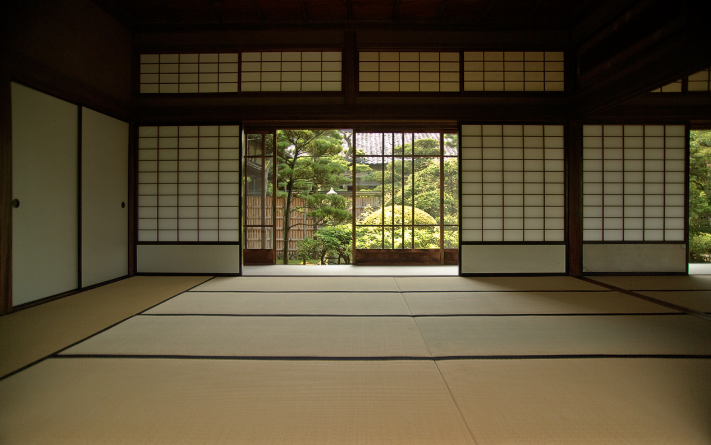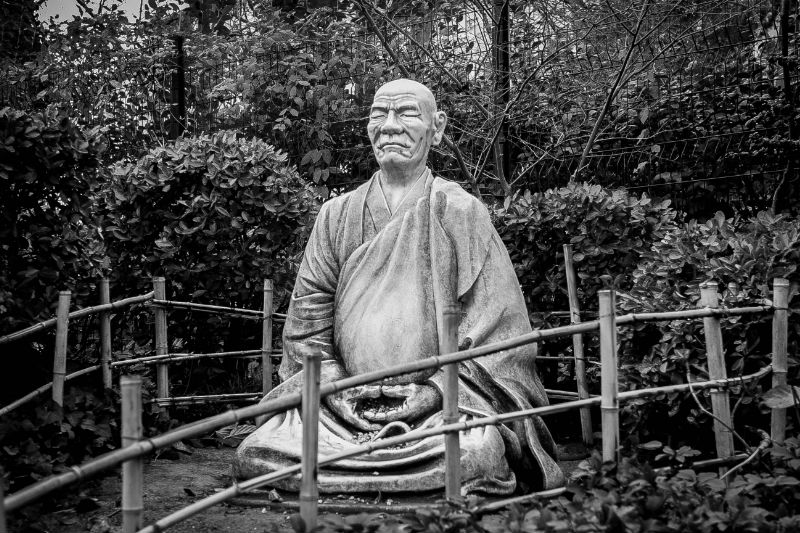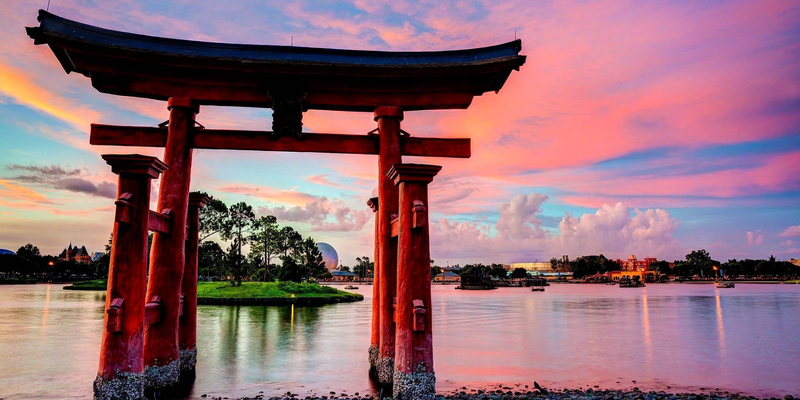There’s so much the world taught us that grad schools didn’t. There’s so much our roots imbibed in us that letting go seems difficult. We walk today knowing we are good at what we do, but we also know there is always something to learn.
For an outsider the Japanese culture does seem a little exhausting. But when you see how this translates to everything they do, it will fascinate you.
Table of Contents
Nihon kenchiku to inspire your User Interface Design
Let me break it down for you. Nihon kenchiku follows these three simple rules:
- Never stray from what you intended to build
- The strength of a design is in its simplicity
- Stay pretty
Japanese architecture provides great inspiration for symmetry, consistency and an excellent user interface. There’s a lot to observe and learn from their architectural styles and influences, but you need to have the ‘eye’.

Let’s look at the sliding door which is a key element of their architecture. Japanese rooms usually have sliding doors referred to as shōji with the characteristic tatami flooring.
Here’s why shoji is a great functional and optimal user interface:
- Conserve space that would be required by a swinging door
- Shoji is thus a motionless and soundless ventilator and heat exchanger (this works exceptionally well for tea houses)
- Shoji paper filters-out tobacco smoke and keeps the adjacent room smoke free
- Ease of “navigation” from one room to another, along with the breathtaking view of the outside
- Acts as a great “filter” to the light coming in from outside
- It is versatile and stronger than you think 🙂

Another example of a good user interface, closely related to Shoji if you look at it, is the material design navigation drawer, an optimal design framework by Google.

The drawer is extremely non-intrusive and allows for a seamless flow of actions. It provides a good view of the screen the user was on before clicking on the drawer (Never stray from what you intended to build), provides great navigation (The strength of a design in its simplicity) and looks fantastic as it over laps (Stay pretty).
Just like the shijo, the drawer adapts to different device screen sizes and can be left open as a permanent drawer on larger screens.
You can look at other great examples of interfaces aimed at providing optimal user experiences and implement the same in your startup or product.
Zazen your way to tranquility

Alright, you got me there! We don’t really need a specific culture to highlight the benefits of meditation. But it is interesting to note how the Japanese praying technique transcends into a way of work.
Zazen is the heart of Japanese Soto Zen Buddhist practice, and for a budding entrepreneur who puts in hours contemplating ideas and retracing his steps, this technique works great!
Zazen commands you to suspend all judgmental thinking, it encourages you to allow ideas, words, images and thoughts pass through without letting it affect you.
For entrepreneurs, this translates to:
- A Relaxed State of Mind
- Greater Confidence
- Reduced Stress
- Increased Creativity
- Become More Patient
- Reduce Distracting Thoughts
- Get a handle on your fears
You can find several successful entrepreneurs and businessmen talking about the advantages of meditation and how they incorporate this in their startup and business lives. A few famous quotes to ponder on:



Inemuri, the art of NOT sleeping

Japanese are considered to be the hardest working people across the globe and Inemuri, the art of napping in public is intriguing to say the least. Though a smart work ethic might get you better results as a modern day entrepreneur, you will have to stretch long hours and lose sleep while building your startup.
Uncover the many layers of dismissal and frowns to see what Inemuri translates to. The Japanese are proud of their dedication and their passion to work puts the most basic need of an individual on a comfortable back seat. They are known to sleep in public and nap whenever possible due to their busy work lives (even at work! which might be a culture shock for the rest of us), and as strange as it seems, they aren’t a least bit embarrassed by it.
“The Japanese don’t sleep. They don’t nap. They do ‘Inemuri’.” explains Dr. Brigitte Steger, in an article on BBC future.
A whole lot of Bushido in business

Samurais follow a code of honor called Bushido, a conscientious way of life that transcended from the warriors to all segments of the Japanese community.
Bushido incorporates compassion, justice, honesty, loyalty, heroic courage, honor, duty, sincerity and courtesy as a set regime.
Incorporating Bushido into business simply means doing everything with integrity and staying loyal.
The first step would be establish and maintain a credible image. To get there you need to arm yourself with the right skills, attitude and tools.
The second measure would be ensuring that you look your part. Appearances are important and you have to showcase the right persona.
Choose your words wisely and you have arrived at step three. For as long as you stay true and take care of your team, your business will attract customers.
Roll like a Sushi
Traditionally sushi making techniques involve rolling the ingredients in a nori, but ingenuity is never too far behind. Sushi literally turned inside out and even strayed away from its traditional form, but what it did not lose is its technique and its purpose.
Back in the real world something very similar is happening, startups are redefining time proven techniques and are taking over the world. Facebook doesn’t create content, Uber doesn’t own any cars, AirBnB owns no properties, but they are doing what they started off to do and they are doing it well.
Bring in new ideas and never shy away from a risk, with the right tools in place you can redefine rules.
Live and let live
We all know about Hiroshima-Nagasaki, we also know about the Tsunami and often wonder how the Japanese tide over events that no one could have survived. The key lies in their immense respect and acceptance of their surroundings.
They’ve learned to live and they’ve learned to adapt.
Adding to the thought, most startups and established businesses are well aware of their eco systems and are willfully managing their existence. Let’s talk local!
Ola a brand new startup in India modeled their business around Uber, both fighting to be the most preferred service provider in the country and both battling the same demons with the government.
Mc Donald’s revamped their whole menu to include vegetarian burgers and completely excluded beef from their offerings in India. Burger King followed suit and the rest is history.
On the other hand is Walmart, still trying to understand the sub continent’s eco system and putting forward calculated steps. Complying with rules while sticking to their ethics is proving to be exhausting, but they are relentless and are giving it their all.
Design it the Shibori way
Artisans who design and create Shibori crafts devise ways to ensure that the handwork is a result of extreme efficiency. Smallest details like the choice of the tying thread are attended to and at times the size of the thread is deliberately changed to create a specific effect.
Such meticulous attention to detail conjures up an image of a man who redefined design: Steve Jobs. I wouldn’t waste your time by stating the obvious and penning down repeated examples, but what I would love to bring your attention to is how Apple bought appearances into the limelight and cashed in on its importance.
Design creates culture. Culture shapes values. Values determine the future – Robert L. Peters
Japanese focus on design and quality consistently while making a strong statement that their products and services can be trusted. At the risk of repeating myself, I’d again say that there is so much more to learn from the world around. Taking cues from people and nature just like the Japanese do is merely a first step.
Every startup is a result of an inspiration and a strong will to offer a ‘one of a kind’ service. As poets and writers and often quote ‘inspiration can come from anywhere’. Where does an entrepreneur get his inspiration from? What stories nudge him to innovate? I’d like to know your story and your experiences, maybe we have a lot in common!
My guest post on what entrepreneurs, or any one for that matter, can learn from the Japanese Culture has been published on iamWire.
Share with me what you’ve learnt from different cultures, and how it translates to enterprising lessons. E-mail me at rishabh@mapplinks.com 🙂
